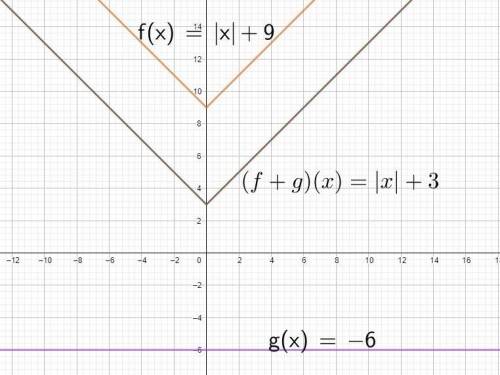 required function is greater than or equal to 3.
required function is greater than or equal to 3.
Step-by-step explanation:
To find : Which describe the value of  ?
?
Solution :
We have given the functions  and
and 
We know, By property
Substituting the values,
If we put any value of x in to this function,
We get a value that is greater than or equal to 3.
Refer the attached figure below.
